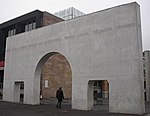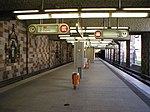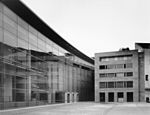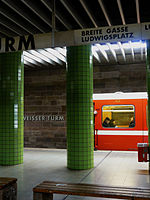Germanisches Nationalmuseum

The Germanisches National Museum is a museum in Nuremberg, Germany. Founded in 1852, it houses a large collection of items relating to German culture and art extending from prehistoric times through to the present day. The Germanisches National Museum is Germany's largest museum of cultural history. Out of its total holding of some 1.3 million objects (including the holdings of the library and the Department of Prints and Drawings), approximately 25,000 are exhibited.The museum is situated in the south of the historic city center between Kornmarkt and Frauentormauer along the medieval city wall. Its entrance hall is situated on Kartäusergasse which was transformed by the Israeli sculptor Dani Karavan to the Way of Human Rights (German: Straße der Menschenrechte).
Excerpt from the Wikipedia article Germanisches Nationalmuseum (License: CC BY-SA 3.0, Authors, Images).Germanisches Nationalmuseum
Kartäusergasse, Nuremberg Altstadt, St. Lorenz
Geographical coordinates (GPS) Address Phone number Website External links Nearby Places Show on map
Geographical coordinates (GPS)
| Latitude | Longitude |
|---|---|
| N 49.448330555556 ° | E 11.075561111111 ° |
Address
Germanisches Nationalmuseum
Kartäusergasse 1
90402 Nuremberg, Altstadt, St. Lorenz
Bavaria, Germany
Open on Google Maps










